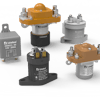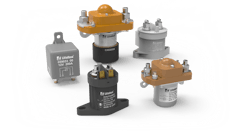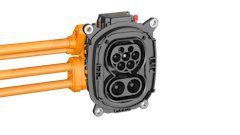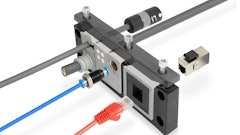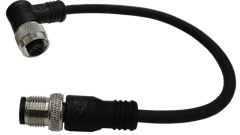
In today’s evolving market, original equipment manufacturers (OEMs) are grappling with a range of complex challenges. A growing scarcity of skilled operators, the rising demand for personalized machine performance, and mounting pressure to maintain cost-effectiveness are a few challenges OEMs face. Balancing intuitive machine design with an advanced control system that adapts to diverse operator profiles and usage scenarios is no small feat. Amid these challenges, telemetry systems are emerging as a promising solution is emerging.
Telematics’ role in optimizing machinery operations
Telematics, while not a new concept, is experiencing significant advancements that are opening fresh opportunities for OEMs. With more machines incorporating electro-hydraulic (EH) actuation and control systems powered by software, the synergy between data collection and software-driven systems offers substantial potential to tackle operational challenges head-on. At its core, a telematics system connects a mobile machine with its operator, enabling real-time information exchange. This information can be leveraged to predict maintenance needs, optimize machine performance and tailor operational patterns to specific user requirements.
In recent years, telematics has become even more impactful thanks to advancements in 5G connectivity, particularly in remote areas. Recent breakthroughs in artificial intelligence (AI) also are playing a critical role in enhancing telematics systems, enabling smarter data analysis and more accurate predictive capabilities. Industries such as construction, forestry, transportation and logistics are increasingly relying on telematics to monitor machine functionality, predict potential failures and optimize performance.
AI-powered analytics can process vast amounts of real-time data, uncovering patterns and providing actionable insights that were once difficult to identify. Understanding the operational profile of a machine — shaped by its duty cycle and the individual operator — can become a key differentiator for OEMs aiming to meet the growing demand for personalized machine performance. The combination of 5G connectivity and AI-driven data analysis presents a great opportunity for OEMs to provide a level of operational customization that drives efficiency and productivity.
Data-driven and software-centric adaptability
One exciting development is the ability to optimize machine performance remotely. By connecting the machine, operator and operation via telematics, OEMs can trigger over-the-air (OTA) configuration updates when specific usage patterns are detected. These updates can adjust parameters like implement response, engine behavior or drive profiles to better suit particular conditions or user preferences. This dynamic adaptability — made possible by software-centric control systems — means the same hardware can be fine-tuned to perform differently depending on the operational context, enabling OEMs to serve multiple market segments with a single, versatile system.
This level of flexibility not only boosts performance but also drives cost-effectiveness by reducing the need for multiple hardware variants. By transferring functions from mechanical or hydraulic systems to software, OEMs can simplify hardware complexity while enhancing functionality. The result is a more cost-effective and adaptable system that can be modified to suit different operational needs without requiring significant hardware changes.
Telematics systems provide valuable insights into machine behavior and operator performance, offering an excellent starting point for addressing the OEM challenge of creating intuitive, easy-to-use interfaces. Simple metrics like vehicle speed, idle time, fuel consumption and engine load during specific tasks can provide actionable insights. Fleet managers can use this data to deploy features such as speed alerts, path optimization and tailored assistance functions based on location and task.
Enhancing after-sales services and security
The potential applications of telematics extend well beyond machine operation to after-sales services. Remote troubleshooting, real-time service scheduling, inventory management for spare parts, and data-driven maintenance packages are all services OEMs can offer to improve customer satisfaction and streamline operations. Recent AI advances are further enhancing predictive maintenance capabilities, helping enable even more precise and timely interventions.
By monitoring key data points, OEMs can identify potential issues before they cause significant damage, minimizing expensive repairs and improving overall fleet management efficiency. Telematics systems also offer significant security benefits.
Features like geo-fencing can alert operators if a machine moves outside its designated area and real-time location tracking can prevent theft and unauthorized use. These capabilities not only safeguard valuable assets but also enhance operational transparency, providing fleet managers with a comprehensive view of machine location and status.
Ensuring data security and maximizing value
Data security is a critical concern for many OEMs and their customers. Fortunately, telematics systems are equipped with robust security measures, including encryption and multi-factor authentication, to protect sensitive data. As telematics systems operate primarily through the cloud, OEMs can implement strong security protocols, reducing the risk of breaches and ensuring that data remains secure.
Telematics providers also can serve as valuable partners in managing data and offer insights that help OEMs optimize operations and improve serviceability. By giving fleet managers and end-users the tools to manage their own data, OEMs can provide maximum flexibility and autonomy, empowering customers to fine-tune operations and gain actionable insights from their machines.
Incremental Implementation for Long-Term Success
For OEMs looking to integrate telematics into their operations, starting small and taking incremental steps is key. Rather than diving into a comprehensive rollout, it is beneficial to begin with pilot programs or specific use cases to understand the system’s impact and effectiveness. By demonstrating the value of telematics in smaller-scale operations, OEMs can build trust and encourage broader adoption across their customer base.
As telematics technology continues to mature, it will play a pivotal role in transforming the heavy machinery sector. The combination of real-time operational insights, predictive maintenance, and remote optimization capabilities represents a significant opportunity for OEMs to enhance productivity, reduce costs and improve customer satisfaction.
Telematics providers can serve as valuable consultants and/or partners in managing the data that’s coming in and offer objective insights that can further benefit operations and serviceability.
Making telemetry systems a strategic advantage for OEMs
Telematics provides a strategic advantage for OEMs looking to remain competitive in an increasingly complex market. By leveraging the power of data and software-driven control systems, OEMs can meet the demands for operational flexibility, improve maintenance efficiency, and offer enhanced security. As technology continues to evolve, OEMs who embrace telematics will position themselves as leaders in an industry that is increasingly reliant on data-driven decision making. With the right systems in place, telematics has the potential to revolutionize how machines operate by helping OEMs drive innovation, reduce costs, and achieve long-term success.


